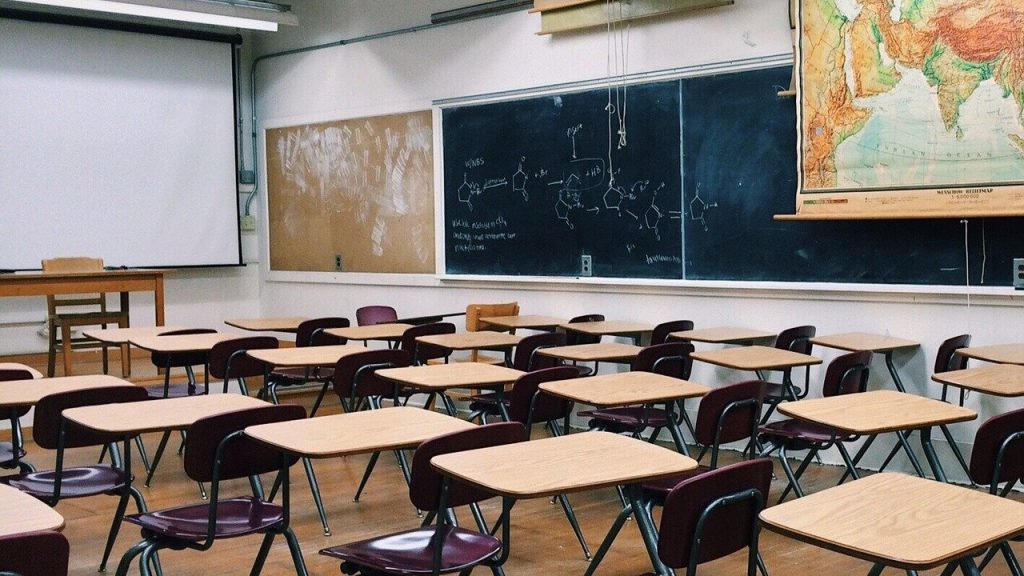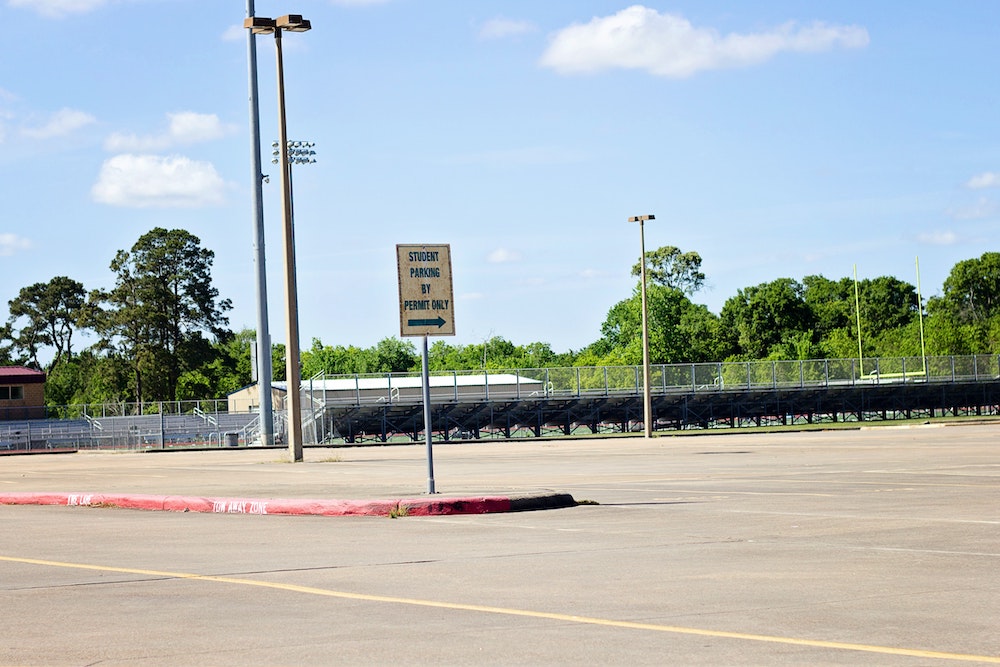Teacher Shortage 2022 – A National Crisis For Schools?
The teacher shortage in 2022 has reached critical limits in some states and is only seeming to get worse.
For many across the nation, school has been back in session for right around a month. Some school districts started at the beginning of August, some in the middle, and some, like the good old days, wait until right after Labor Day weekend. But in many, a teacher shortage in 2022 is leading to issues.
The beginning of this school year has been met with trepidation – the COVID pandemic has seen to that. Students have fallen dangerously behind in learning, school districts are trying to meet their needs and, in many instances, failing miserably, and those in the trenches – our teachers – are falling by the wayside.
As the problems continue to mount for public education, one issue rises above them all. We have a teacher shortage in 2022, and it doesn’t appear there is a solution.
THE TEACHER SHORTAGE IN 2022 ISN’T ALL BECAUSE OF THE PANDEMIC

Let’s be clear on one thing – the COVID pandemic is not what started the teacher shortage. Prior to the 2019-20 school year, school districts across the nation were already beginning to see an exodus of teachers. Back in 2019, before COVID was a thing, Emma Garcia and Elaine Weiss from the Economic Policy Institute released its Perfect Storm in the Teacher Labor Market series.
In part, they said, “The teacher shortage (in 2022) is real, large and growing, and worse than we thought. When indicators of teacher quality (certification, relevant training, experience, etc.) are taken into account, the shortage is even more acute than currently estimated with high-poverty schools suffering the most from the shortage of credentialed teachers.”
What the authors were warning at the time of their six-part series, which came well before COVID took over, was that the large teacher shortage in 2022 that was seen then was not going to go away, especially in the poverty-stricken areas.
The problems then were complex and multiple that revolved around teachers’ low pay, almost no professional growth opportunities, horrible and many times dangerous working environments, and the continued looking down on the teaching profession. Sound familiar?
COVID ONLY MADE THE TEACHER SHORTAGE IN 2022 WORSE

Let’s be clear on one more thing – the COVID pandemic definitely made things worse. We are now at a tipping point with our teacher shortage in 2022 and COVID was the exclamation point to the issues teachers face.
Not only did the COVID pandemic shine a huge spotlight on the public education system and how broken it is, as more teachers vacated their positions, districts were not only losing teachers, but they were losing quality educators.
In the two-plus years of the COVID pandemic, teachers have been put smack dab in the middle of the pandemic debates and the cultural battles that have accompanied them.
In a Bloomberg report, teacher Diane D’Costa said that even though her school year was not even halfway complete, she knew she was done with teaching. “I was doing the job of five people,” she complained, describing her duties as a Washington, D.C. teacher. When she walked away from the job, the 26-year-old had only been teaching for four years.
Article continues below headlines

The Best Type Of Butter Dish For Your Home Kitchen
The history of the butter dish is intertwined with the history of butter itself and the evolution of dining etiquette. …
Continue reading "The Best Type Of Butter Dish For Your Home Kitchen"
The post The Best Type Of Butter Dish For Your Home Kitchen appeared first on Tell Me Best.
Continue
The '80s Horror Fantasy Anime Epic Every Fan Needs To Stream Right Now
Demon City Shinjuku is an animated film focused on demons invading Shinjuku, Tokyo. After a demon gets the upper hand …Continue reading "The ’80s Horror Fantasy Anime Epic Every Fan Needs To Stream Right Now"
ContinueIt’s not surprising to hear that many teachers claim they would have quit long ago if not for their students. Devotion to the art of teaching, watching children learn and grow, knowing that although there is little respect for the job, that deep down you know what you’re doing is one of the most important positions a person can hold, all of this is why so many stuck it out. Simple, pure, devotion.
But time takes its toll and these past two years have been the most demoralizing and demanding that teachers have faced. It adds up – the Zoom schooling, the growing culture wars, and once school was back in session, the horrific school shootings.
Burnout was bad before all of this, but burnout, according to a Gallup Poll, showed that K-12 teachers were by far the most burned-out group in our entire U.S. labor force.
According to a Gallup Poll conducted from February 3-14, 2022 (before this brand-new school year even began), K-12 Education represented 44% of US workers who claim they feel burned out, a big reason for the teacher shortage in 2022 .
The next highest compared to K-12 educators was college or university educators at 35%. Professional services and Government or public policy came in a tie for third at 33%. Next came retail at 32% and health care and law both tied at 31%.
Earlier this year when schools were set to go back to school after their winter break (which was more of a continuation of the school lockouts), things went from bad to worse. In Atlanta, school was all set to resume in-person learning, but just days before, the school district announced out of the blue that they were going to return to virtual learning.
Imagine the scrambling both teachers and parents had to endure. No wonder Georgia is feeling the teacher shortage in 2022.
Eric Adams, the newly-elected New York City mayor, had been against virtual learning, had schools reopen, and for COVID safety measures, had classes taught with windows open. In January. Students and teachers had to wear parkas to class in their attempts to stay warm while the COVID-filled air filtered out the open windows.
It had one Brooklyn teacher, Electra Telesford tweet out, “I’ve been a teacher for years and this is the worst it’s been. They don’t pay me enough.” Who can blame her and no wonder the teacher shortage hit the Big Apple.
Yes, school districts were losing teachers before COVID reared its ugly head, but COVID ended up being the straw that stirred the teacher shortage in 2022 drink. The mass exodus continued as school resumed and since that time, the numbers of teachers leaving for other professions and higher pay and more respect have only increased.
KANSAS, FLORIDA, AND ALABAMA ARE AMONG STATES FACING THE BIGGEST TEACHERS SHORTAGES IN 2022

Trust us, and you all probably are aware of this from wherever you are sitting in the U.S. right now, mostly all states are feeling the effects of the teacher shortage. In Kansas, the state is facing its worst teacher shortage ever. Mask-wearing, book banning, teaching history, and race, all of these components have contributed to the Kansas teacher shortage.
In Florida, the Florida Education Association claims there are nearly 8,000 teacher openings in the state. Southern states seem to be the hardest hit by the teacher shortage in 2022. Mississippi, Alabama, and Georgia report they have over 3,000 vacancies in their states. Overall, the southern states have the highest number of vacancies with over 22,600. In comparison, the Midwest states have around 7,400.
SCHOOLS ARE OFFERING BONUSES FOR NEW HIRES AND FOR THOSE STILL TEACHING
It’s not like these states and their school districts aren’t trying to retain or even coax in a new era of teachers, because they are. Teachers have rightfully so forever been complaining about pay. As a way to entice teachers not to walk away, districts have been offering bonuses to stay on as well as signing bonuses for the new teachers on the block.
Across the country, you are routinely seeing bonuses in the $5,000-25,000 range. In Hartford, Connecticut, they are offering a $5,000 bonus to combat the teacher shortage in 2022 in areas such as science, math, and bilingual education. Stanly County Schools, located in North Carolina have announced that they are willing to pony up a $10,000 incentive to teachers who will sign on with them.
School districts aren’t only offering signing bonuses to combat the teacher shortage. In Taos, New Mexico, they promise a $50,000 starting salary for any new teacher hire. On top of that, teachers will also get a cool $10,000 signing bonus.
Want to know how desperate some districts are? We go back to New Mexico and the Gallup-McKinley County Schools. They are trying to lure teachers in by offering $8,000-22,000 signing bonuses PLUS $2,500-4,500 for relocation. This could work out to around $25,000 in your favor should you wish to lighten New Mexico’s teacher shortage in 2022.
DISTRICTS ARE GOING TO A FOUR-DAY SCHOOL WEEK
True, money does talk, and that could eventually be the one thing that brings some teachers back to the classrooms, but there are other ways school districts are trying to get them back on campus. In the Lone Star state of Texas, there are a number of rural school districts that are fighting teacher shortage not only with increased pay but also by moving to a four-day school week. They are doing this now for lack of teachers, but they are also thinking it may be the way of the future.
Florida is taking a different approach to “combat” its teacher shortage. They are now turning to Army veterans, retired policemen, and first responders who have zero teaching experience to head to the classroom to teach the Florida youth. In Arizona, they are going in the exact opposite direction.
Instead of Army vets, they are turning to college students who have no teaching certifications. While this is a move to start filling classrooms again, is it the smartest move?
EXPERTS SAY SCHOOL DISTRICTS HAVE PLENTY OF MONEY FROM COVID RELIEF
Making the teaching shortage numbers look even worse is the fact that there is an increase in the number of open teaching positions. There are plenty of school districts that have been trying to make up for the lost time by using their federal COVID relief money to add new teaching positions.
So, while the number of teachers quitting is at an all-time high, the open teaching positions look worse with the addition of new teaching jobs.
Chad Aldeman, policy director of Georgetown University’s Edunomics Lab, explained how these teacher shortage numbers can be misleading. “Districts are currently flush with cash thanks to the infusion of $190 billion in federal aid. As a result, many districts have ambitious hiring plans to add more teachers, mental health supports, instructional aides, or tutors,” he said in an email to The 74.
According to a recent study from the Rand Corporation, over three-quarters of the nation’s school systems have increased their numbers from their pre-COVID totals, which include both teaching and non-teaching positions. This easily explains the mind-numbing teacher shortage numbers, but still doesn’t offer a solution.
The outlook is bleak, getting worse, and only shows that even throwing money at the problem may not be enough. Teachers are burned out. They have been left with a feeling of hopelessness in the face of COVID and beyond. They say they can deal with the lack of resources; they have been doing that for years, but the lack of respect and the lack of support has taken its toll. Is there still time to turn this thing around? Perhaps.
But the damage has been done and how that gets rectified is another question that needs answering. It starts with somehow stopping this mass teacher exodus and fixing the teacher shortage.







